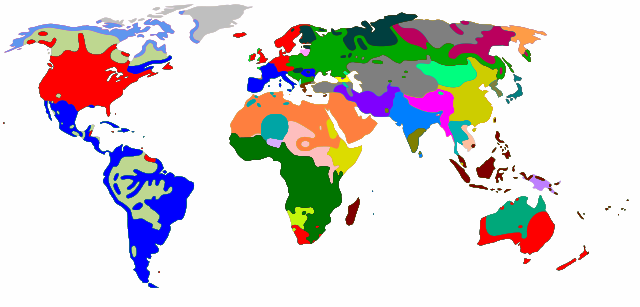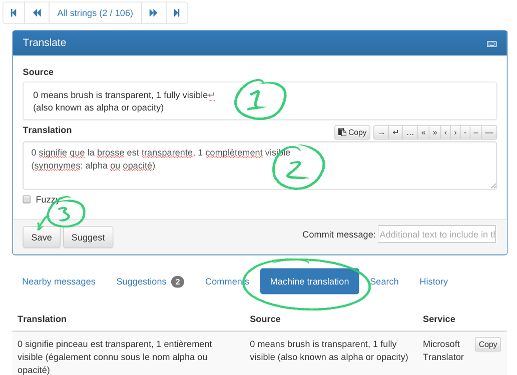Final translation push for 1.2.0

MyPaint is nearing its next stable release, v1.2.0, and that means it’s time to get the translations finalized. Today marks the start of a week-long translation effort for MyPaint, and we need your help!
Translation status
At the time of writing, the 33 languages we support are just under 50% translated. We’d like that figure to be much higher! Can we get to 55% or 60% within a week, or complete one or more of the smaller languages?
How you can help
If you’re new to translating software, welcome! We’ve made it as simple as possible to help. All of the program text is available for translation on WebLate. WebLate is a collaborative online tool that presents each fragment of text in turn, and asks you to translate it. If you’re not sure, you can type in suggestions for other translators.
Click here to start translating
(and please share the link with your friends!)
You can log in with social media accounts, or your Github account if you are already a developer. The account name is recorded in the commit log, and you can add your name to the credits by adding it to the translation of the “translator-credits” marker string.
What needs translating?
MyPaint has two components which can be translated:
- libmypaint: This is MyPaint’s dynamic brush engine. The strings for translation are all brush setings, inputs, etc. Without context, this can be somewhat hard to translate.
- MyPaint: The main GUI for the program. Context is present for a subset of these, and the strings don’t require as much domain-specific knowledge. However, there are a lot of them.
Translation workflow
The main translation interface looks like this:

- Source texts in the program are written in US English.
- The translation text box is where you write your translated text.
- When you’re confident the translation is correct, click on Save to move on to the next string in the current list.
The fuzzy checkbox is an indication that this translation is a guess. Sometimes this is because the tools we use have been forced to make an estimate about which ild translation is which (it happens, sorry!) Alternatively, other translators may have flagged the string as erroneous. Fuzzy strings are not presented in the user interface, so reviewing and cleaning up fuzzy translations will really help a translation present much more usefully.
One hidden feature in the WebLate UI is the Machine Translation tab. It’s pictured above, but it isn’t open by default. Machine translation can be used as a starting point, but please don’t machine-translate the entire program!
You will sometimes see formatting codes in strings that need translating. These might look like any of the following:
- “%s”, “%r”, “%d”, etc. (python-format)
- “{like_this}” (python-brace-format)
These need to stay in the translated text. The MyPaint program will try to replace them with other fragments of text at runtime, for example the name of a file, or a pixel size. If they are omitted, the program may crash or present the user with an error message.
If you’re an expert in MyPaint and want to help out other translators of your language who don’t know the program that well, please consider adding to its glossary. This is also a good place to write up a style guide for your language’s translation.
Even if your language is complete, you can help by sharing the link above among your colleagues and friends on social media.
Page image: https://commons.wikimedia.org/wiki/File:Languages_world_map.svg by Bardion and Julien1311, GFDL/cc-by-sa-3.0.
